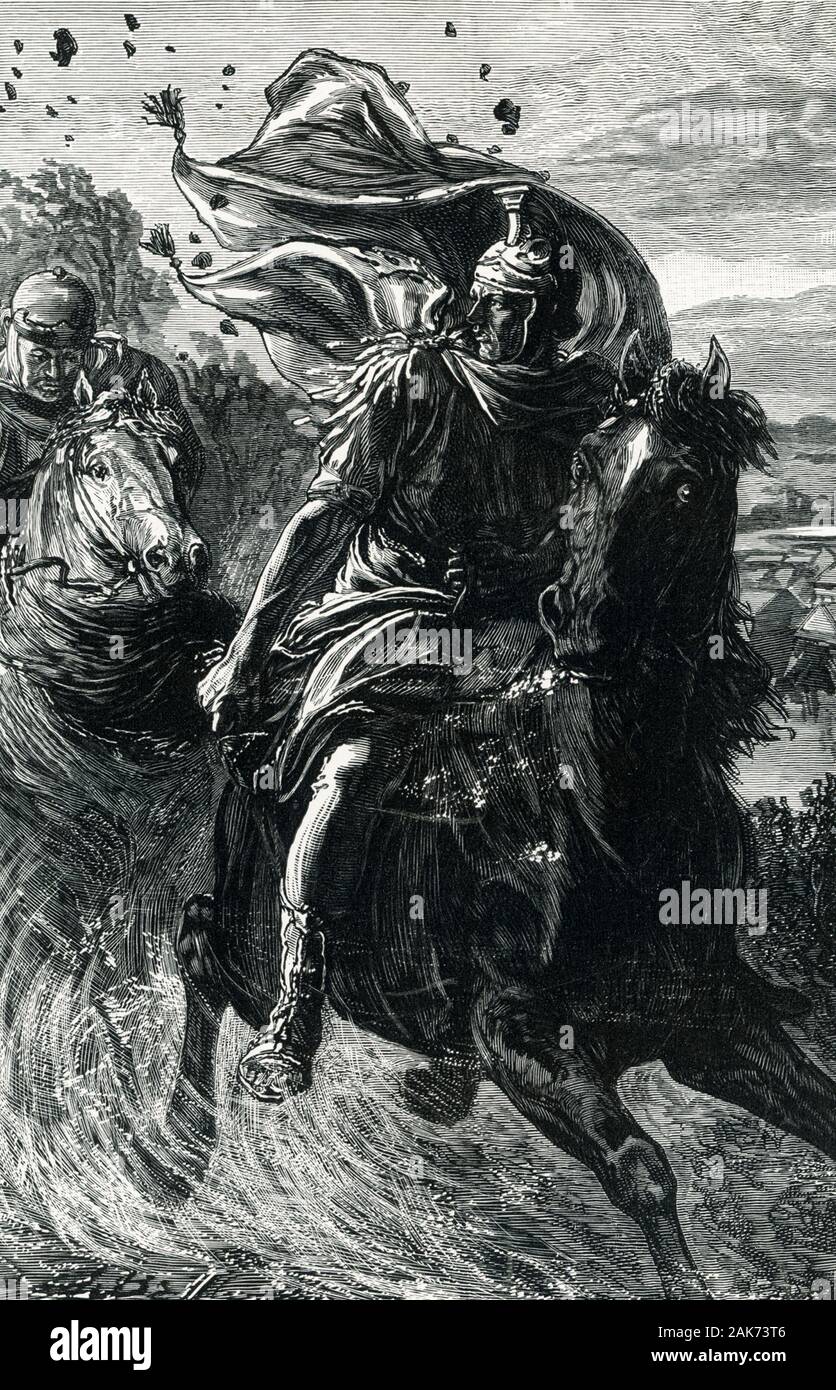This illustration dates to the early 1900s and shows the Flight of Pompey from Pharsalia. On August 9, 48 BC at Pharsalus in central Greece, Gaius Julius Caesar and his allies formed up opposite the army of the republic under the command of Gnaeus Pompeius Magnus (also known as "Pompey the Great"). Pompey had the backing of a majority of the senators, of whom many were optimates, and his army significantly outnumbered the veteran Caesarian legions. Caesar, in a much weaker position than Pompey, found himself isolated in a hostile country with only 22,000 men and short of provisions. Pompey wan

Image details
Contributor:
Ivy Close Images / Alamy Stock PhotoImage ID:
2AK73T6File size:
53.7 MB (3.4 MB Compressed download)Releases:
Model - no | Property - noDo I need a release?Dimensions:
3476 x 5400 px | 29.4 x 45.7 cm | 11.6 x 18 inches | 300dpiDate taken:
30 December 2019More information:
This image could have imperfections as it’s either historical or reportage.
This illustration dates to the early 1900s and shows the Flight of Pompey from Pharsalia. On August 9, 48 BC at Pharsalus in central Greece, Gaius Julius Caesar and his allies formed up opposite the army of the republic under the command of Gnaeus Pompeius Magnus (also known as "Pompey the Great"). Pompey had the backing of a majority of the senators, of whom many were optimates, and his army significantly outnumbered the veteran Caesarian legions. Caesar, in a much weaker position than Pompey, found himself isolated in a hostile country with only 22, 000 men and short of provisions. Pompey wanted to delay, knowing the enemy would eventually surrender from hunger and exhaustion. Pressured by the senators present and by his officers, he reluctantly engaged in battle and suffered an overwhelming defeat, ultimately fleeing the camp (as seen here) and his men. He was later assassinated in Egypt by Ptolemy XIII. The caption for this image reads: When he fled from that disastrous field, he became an outcast, a desperate, hunted man, riding to his murder. He spurs in wild, mud-spattered haste. Life is for the moment the main thing, the first that must be saved from the wreck of defeat! The picture is one of speed. Yet what must have been Pompey’s mood! What passions of hate and fury must have swayed him! Could any artist express, as we can imagine them!